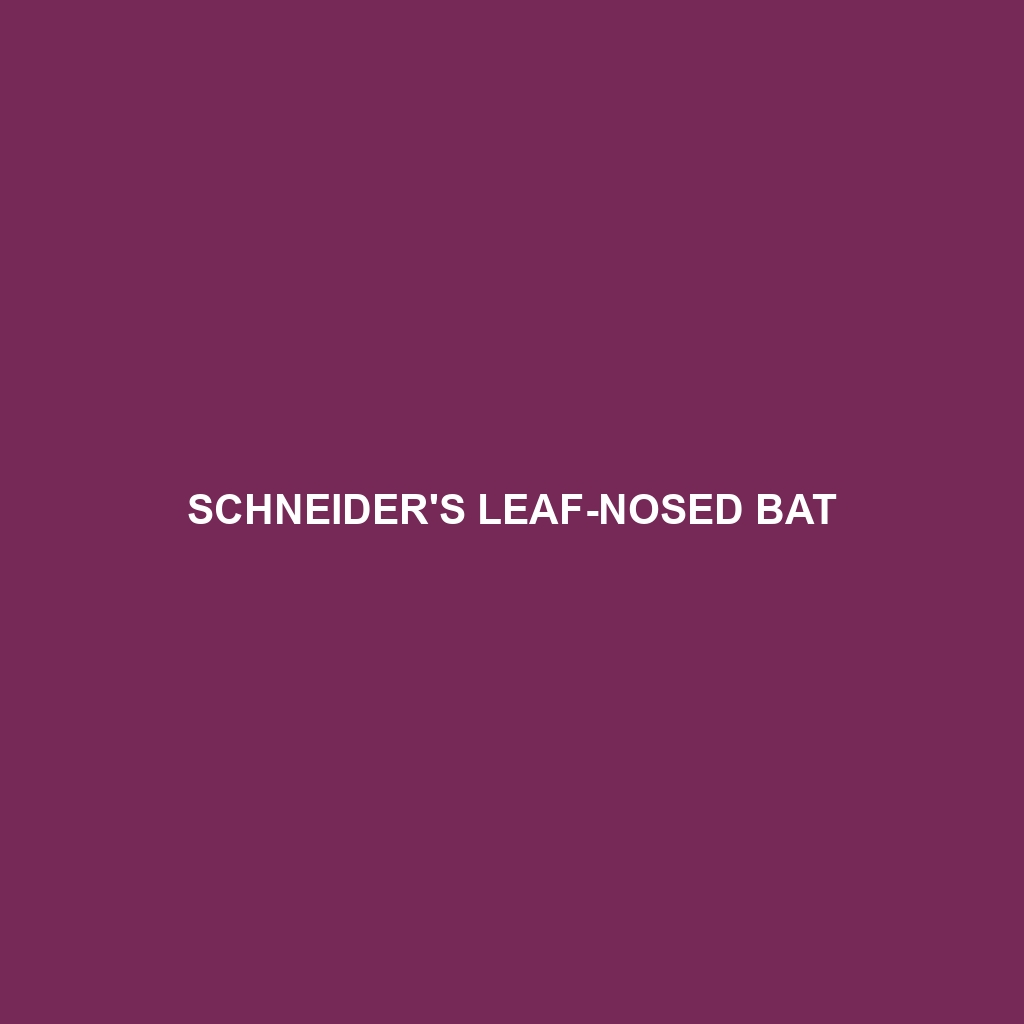Schneider’s Leaf-nosed Bat
Common Name: Schneider’s Leaf-nosed Bat
Scientific Name: Hipposideros schneideri
Habitat
Schneider’s Leaf-nosed Bat is primarily found in tropical and subtropical regions of Southeast Asia. This species thrives in dense forests, including primary and secondary growth forests, as well as limestone caves that serve as roosting sites. The bat prefers humid environments and is commonly sighted in countries such as Malaysia, Thailand, and Indonesia, where it takes advantage of the unique microhabitats provided by caves and foliage.
Physical Characteristics
Schneider’s Leaf-nosed Bat is a medium-sized bat with a unique appearance. Adults typically weigh between 15 and 30 grams and have a wingspan of about 30 to 35 centimeters. Their fur is mostly grayish-brown, with lighter underparts. A distinctive feature is the pronounced leaf-like structure on their nose, which aids in echolocation. Additionally, their large ears are connected at the base, forming a unique shape that sets them apart from other bat species.
Behavior
This species exhibits primarily nocturnal behavior, emerging at dusk to hunt for food. Schneider’s Leaf-nosed Bat utilizes sophisticated echolocation to navigate and locate prey in the dark. They are social creatures, often roosting in colonies that can number in the hundreds. Moreover, they have been known to display territorial behaviors, especially during the breeding season, which are intriguing to researchers studying bat communication patterns.
Diet
Dietarily, Schneider’s Leaf-nosed Bat is an insectivorous species, predominantly feeding on moths, beetles, and other flying insects. They exhibit a foraging style that involves capturing prey in mid-air using their agile flight and echolocation abilities. Their role as a natural pest control agent in their habitats makes them essential contributors to local ecosystems.
Reproduction
The reproductive habits of Schneider’s Leaf-nosed Bat are characterized by a seasonal breeding cycle. Breeding typically occurs during the rainy season, with females giving birth to one or two pups after a gestation period of approximately 2 to 3 months. Mothers exhibit strong maternal care, nursing and protecting their young until they are capable of independent flight and foraging.
Conservation Status
As of the latest assessments, Schneider’s Leaf-nosed Bat is listed as **Vulnerable** by the International Union for Conservation of Nature (IUCN). Habitat loss due to deforestation and human encroachment poses significant threats to their populations. Conservation efforts are crucial to ensure the survival of this unique bat species and its habitats.
Interesting Facts
1. Schneider’s Leaf-nosed Bat has a highly developed sense of hearing, enabling them to detect even the faintest sounds in their environment.
2. The distinctive noseleaf of this bat not only aids in echolocation but also plays a crucial role in mating displays.
3. This bat can consume up to 100 insects in a single night, making them vital for controlling pest populations.
Role in Ecosystem
Schneider’s Leaf-nosed Bat plays a crucial role in its ecosystem by serving as a natural pest controller, helping to regulate insect populations. Their foraging behavior supports plant health by reducing the number of herbivorous insects. Additionally, by pollinating flowers and dispersing seeds through their droppings, they contribute to the biodiversity and sustainability of their habitats.
